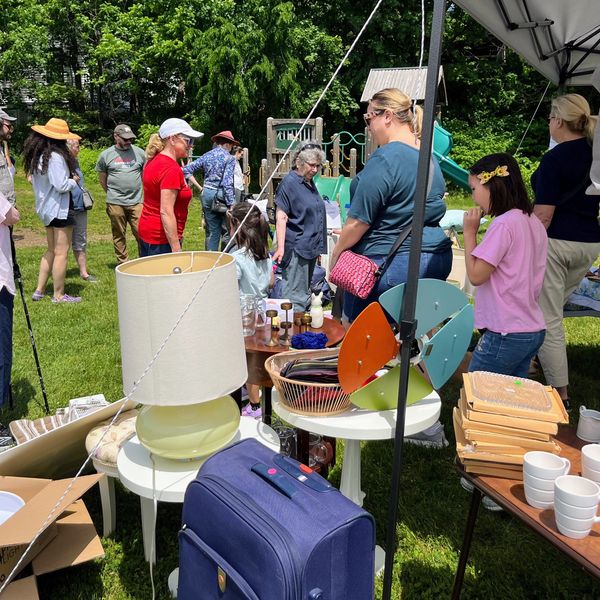Latest News
Millbrook names top-ranked scholars
Amber Concannon
MILLBROOK — Strong leadership skills and confidence in communication are evident contributors to Amber Concannon having earned her designation as Valedictorian of the Millbrook High School Class of 2025.
“I have truly loved my time at Millbrook,” Amber said of her Millbrook schooling that began when she was enrolled in kindergarten.
Amber reflected on her accomplishment during an interview on Monday, April 7. She was born in Ireland and lived abroad for her very early years before her family moved to the area. Her grandfather was from India. Her several relatives are scattered throughout the U.S., she said.
High school years have included a balance of time devoted to leadership, sports, and academics.
For three years, Amber has ably assisted the staff at the Youth Summer Program.
“I love it there; I think it’s really fun,” Amber said of the YSP experience.
“Emphasize balance in your life during your high school years,” was her advice to students about to begin their high school years.
“Academics are so important,” she said, “but make time for other things, to learn about yourself. Joining school clubs is important to get to know other students and to hone leadership skills. Each club’s advisor, whether teacher or administrator, really cares about the club’s success,” she said.
“Attending a small high school has made forming relationships with my teachers, pursuing out-of-class assistance, and being an active part of the school community second nature,” Amber said.
Amber has been a member of the Jazz Band playing clarinet and singing, Mock Trial, Model United Nations, Drama Club, and Interact Club, as well as being a part of the National Honor Society. Outside of school, she reported spending the past four years working at the Merritt Bookstore in addition to her volunteer work for the Dutchess County Parks Summer Program.
Still considering her choice of college, Amber said that she hopes to spend time studying and working abroad and plans to attend Marist University.
Millbrook High School Principal Eric Seipp shared his impressions of Amber’s high school years.
“I am incredibly proud to celebrate Amber Concannon as our Valedictorian,” Seipp said.
“Amber’s passion for learning, dedication to excellence, and deep involvement in our school community have made her an outstanding role model for her peers,” Seipp said.
“Having fully embraced every opportunity to grow and contribute, Amber’s curiosity and ambition will no doubt take her far as she pursues her studies and explores the world beyond Millbrook,” Seipp said.
“I am forever grateful for all the wonderful opportunities that Millbrook has provided me with and for the encouragement and guidance I have received from the amazing teachers and staff,” Amber said.
“I also want to thank my friends and my loving family here, in Ireland, and in India for their endless support,” Amber said.

MILLBROOK — Excelling at every turn in her educational path, Lisa Cameron has well-earned the honor of Salutatorian for the Class of 2025 at Millbrook High School.
Lisa began her Millbrook schooling when she enrolled in Kindergarten.
“Throughout my time in Millbrook, I have found pride in pushing and holding myself accountable for my education. While learning in the classroom, I also am a participant in extracurriculars,” Lisa said during an interview on Monday, April 7.
“I strive for excellence,” she said, as she considered advice to students about to begin their high school years. “I want to succeed personally.”
“Get involved early,” Lisa advised, “in sports, clubs and extracurricular activities. Open yourself to the opportunity to know new people.”
“When you are struggling with understanding some point taught in class, don’t be scared to ask for help. Your teacher is there as a resource. That’s the first step in learning mastery…realizing what you don’t know,” Lisa said of her own experience.
“The teachers are supportive; that’s why they became teachers,” she said.
During her senior year, she has served as the president of the Millbrook Chapter of the National Honor Society. She has also served in leadership positions along the way, including as Class President and Class Treasurer, as well as President of the Prom Committee.
Outside of high school, Lisa is employed as a server at Hangars’ Café in Union Vale and she regularly volunteers at Freedom Plains Cemetery where her father serves as the superintendent.
“I grew up in that cemetery,” Lisa said, proud of her work to care for it and those who are remembered there. Among her varied tasks, she particularly relishes placing flags at the graves of veterans, a tribute to her grandfather who had served.
After graduation, Lisa plans to continue her studies at Penn State University, majoring in civil engineering with a specialization in environmental engineering.
“I am honored to recognize Lisa Cameron as our Salutatorian. Lisa’s unwavering dedication to academic excellence, leadership, and community service embodies the very best of what it means to be a Millbrook student,” said Millbrook Principal Eric Seipp.
“Her commitment to challenging herself in the classroom, leading her peers within thr National Honor Society and student government, and serving the community showcases her remarkable character and determination. Lisa’s future is bright, and I have no doubt she will continue to make a meaningful impact wherever she goes,” Seipp added.
“I will forever be grateful for my time at Millbrook, as this district brought me not only knowledge but also introduced me to individuals, experiences, and opportunities that have all guided me to my future path beyond Millbrook,” Lisa said.
Amenia gathers at Fountain Square
A traditional Memorial Day observance to honor the fallen was held Fountain Square on Monday, May 26. The ceremony included an Honor Guard from the Wassaic Fire Company standing by the Veterans’ Memorial Wall.
AMENIA — The community gathered at Fountain Square under sunny skies on Monday, May 26, for a Memorial Day ceremony to honor the fallen who bravely served their country. Remembrances, tributes, prayers and music combined to create the fitting annual tribute.
An Honor Guard from VFW Post #5444 of Dover Plains presented the colors at the start of the ceremony that began promptly at 11 a.m. with a welcome from VFW Commander Nick Woodard to the more than 100 who had gathered.
“Aware of the dangers but responding to the call of duty,” Woodard spoke of those who bravely served and ultimately sacrificed their lives. On behalf of those gathered, he extended deepest respects and “the highest tribute we can offer.”
VFW Post Chaplain Rick Butler offered a prayer asking for help in supporting families of those who gave their lives for their country.
“How far back are the losses,” said Town Supervisor Leo Blackman, reflecting on the losses over centuries of battle. He spoke of the ongoing historical society project to erect signs at each local historic cemetery where Revolutionary War veterans are buried.
The ceremony included donation of a defibrillator by former local Fire Chief Bob Boyles to VFW Post #5444, Auxiliary President Charlene Mayville.
Closing prayer was offered by Fr. Andrew O’Connor of Immaculate Conception Church who read Psalm 127.
In closing the ceremony, Commander Woodard thanked all who contributed to the ceremony, including the local fire departments, the Honor Guard of the Wassaic Fire Company, the Community Enhancement Committee for Fountain Square floral planting, Vicki Doyle, Leo Blackman and the Honor Guard and Auxiliary of Post #5444.
Looking at America
Jay Dacey of the United Kingdom’s Channel 4 took an unexpected detour to the Village of Millerton on Friday, May 23 to capture footage of a rural American town.
The stop was one of the last on a 10-day trip to the United States to film a piece on American politics.
Other filming locations included Washington, D.C., New Haven, and Shelter Island in eastern New York.












Village Trustees hear call to adopt law to limit local cooperation with ICE
Barbara Graham of Millerton speaks to Village trustees, Mayor Jenn Najdek and Millerton Police Chief Joseph Olenik during a May 21 special meeting.
MILLERTON — The Village of Millerton board of trustees held a special meeting on Wednesday, May 21 that drew an unusually large crowd. Nearly 20 residents and supporters showed up to urge officials to adopt a local law aimed at protecting immigrants, including undocumented community members.
The law, as proposed by meeting attendees, would limit cooperation between local law enforcement and U.S. Immigration and Customs Enforcement.
While no resolution was reached, Mayor Jenn Najdek agreed to schedule a follow-up special meeting where the public can speak with Village legal counsel and explore the proposal in a more practical, informed setting. The yet-to-be scheduled meeting is expected to take place sometime in June, according to Najdek.
The meeting addressed ongoing ICE activity in the Hudson Valley and throughout the country, primarily reports of arrests made without judicial warrants and alleged misidentifications. Millerton’s police department, which operates on a limited, part-time basis, is not typically involved in immigration enforcement, but residents said clear local guidelines are necessary before an event or arrest occurs.
“Our village has a moral imperative to do everything in its power to protect the rights and dignity of immigrants who live and work in our community,” said Barbara Graham, a Millerton resident of 14 years.
Graham spearheaded an email to Mayor Najdek and the Village board that to get on the Board’s agenda. Co-signed by six Millerton residents and 11 supporters, the letter urged the board to “affirm its commitment to justice, constitutional rights, and community trust.”
Wearing a homemade lapel pin that read, “Well-being for all beings,” Graham read aloud from the group’s letter. Najdek then opened the floor for public comment.
“I don’t think anybody here is asking the Village to tell the police how to do their job,” said Bill Kish of the Town of North East. “What we’re asking is that the Village provide clear guidance in the form of local law…that unless a judicial warrant is provided, the police will not use any of their resources to help.”
Eliot Ramos, a Village resident, added, “Newcomer or lifelong local, adopting a law that bars our police from collaborating with ICE is an act of partnership and moral leadership that honors due process.”
Trustees and community members alike noted the limited effect a law of this nature might have at the local level. Still, the response from meeting attendees was unanimous. Andres Vialpando, who said he was born and raised in Millerton, noted a law would carry weight even as a symbolic gesture.
“I’d be proud to say that my village is standing up for what I would call good and healthy laws,” Vialpando said. “I support this initiative, even if it seems like, at some level, it could be unnecessary.”
Though the discussion was scheduled for 15 minutes, it continued for nearly an hour. Following public comment, Najdek, the four Village trustees and Police Chief Joseph Olenik addressed the concerns.
They noted the cost of legal consultation — estimated at $5,000 according to Najdek — could strain an already tight budget. Officials also noted the potential repercussions of adopting such a law, including the loss of federal funding for infrastructure projects like sidewalks and sewer upgrades.
“We’re doing our work, applying for grants, applying for funding, getting projects completed,” said Najdek. “My concern is that we’re putting a spotlight on us that could impact funding over the next five years. It’s a real concern for a village of our size.”
Throughout the meeting, questions arose about the legal interplay between local, state and federal jurisdictions. Residents pressed for specifics about what would happen if ICE entered the village. Chief Olenik offered a limited response.
“At this point in time, I would be assisting them,” he said. “I wouldn’t be making the arrests, but I would be assisting them with whatever they would need us to do as Village PD.”
He added that he would not hinder an investigation or withhold information from the State Police, the Sheriff’s Office or ICE.
Weighing the risks and rewards of pursuing such a law, Najdek responded emotionally: “I want to do my job. I want to keep my head down. I want to do the right thing for the Village the best I can.”
Other items addressed during the special meeting included the approval of $99,498.99 in vouchers from April and May; the delivery and acceptance of department reports; approval of previous meeting minutes; and a discussion of Express Bill Pay, a new software system that will allow residents to pay utility bills online by credit card or e-check.